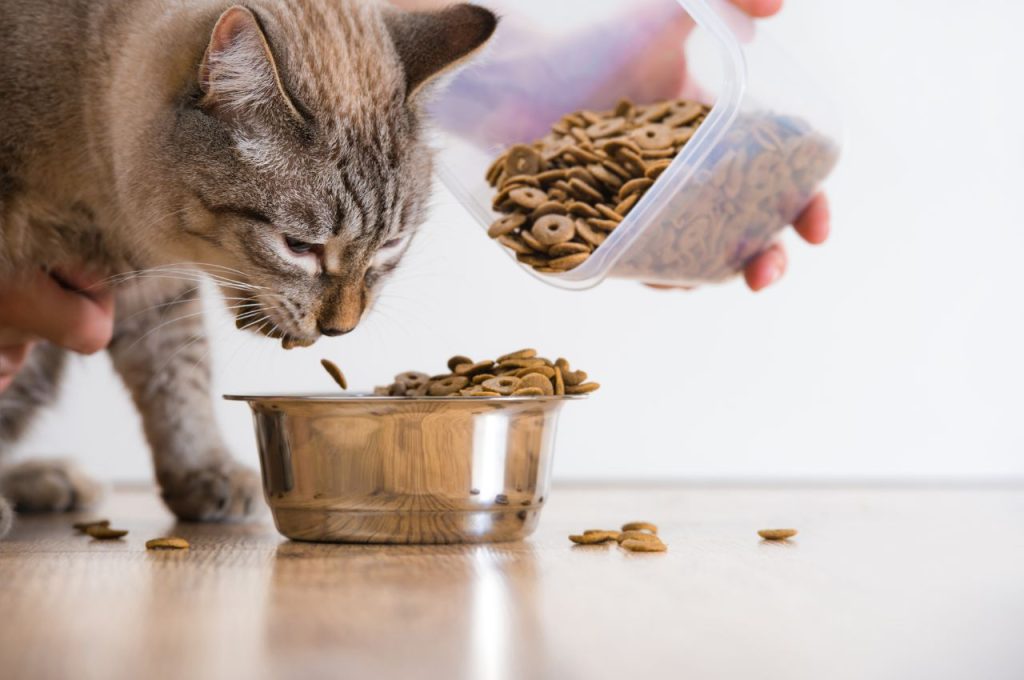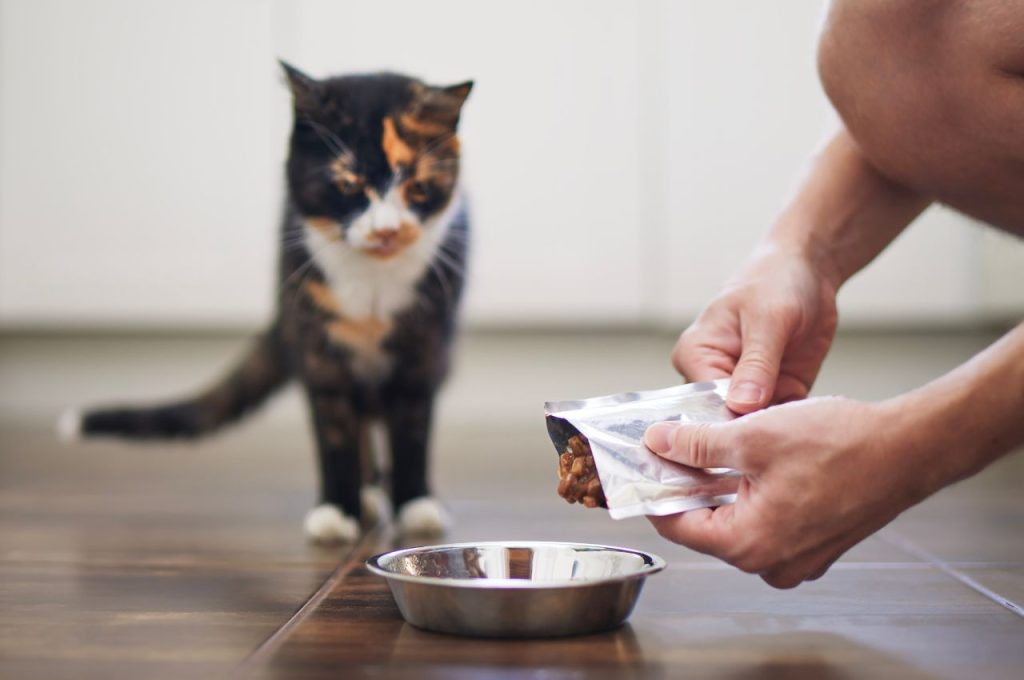Are you a cat owner who is struggling to get your feline friend to eat? Don’t worry, you’re not alone. Many cat owners face the challenge of finicky eaters, which can be both frustrating and concerning. Whether you have a new kitten or an adult cat, ensuring they have a healthy appetite is essential for their overall well-being.
In this guide, we will explore effective strategies and tips to help you get your cat to eat. From understanding their dietary preferences to creating a conducive eating environment, we will provide you with practical advice that will have your cat purring with satisfaction in no time. Cats are notorious for their discerning tastes and independent nature, which can make getting them to eat a tricky task. However, with patience, understanding, and a few simple adjustments, you can encourage your cat to develop healthy eating habits.
In this comprehensive guide, we will delve into the various factors that may contribute to your cat’s reluctance to eat, such as medical conditions, stress, or changes in their environment. We will also discuss the importance of a balanced diet and how to introduce new foods to your cat’s palate.
Evaluate the Food and Feeding Environment
The first step in encouraging your cat to eat is to evaluate their food and feeding environment. Make sure you are offering high-quality cat food that is appropriate for your cat’s age and health condition. If you’re unsure, consult with a veterinarian for recommendations. Additionally, check the expiration date of the food to ensure it is still fresh.

Next, take a look at the feeding environment. Cats are known to be finicky eaters and can be sensitive to their surroundings. Ensure that the food and water bowls are clean and placed in a quiet area, away from any distractions or loud noises. Some cats also prefer a certain type of bowl material, so you may want to experiment with different options to see what your cat prefers.
Try Different Food Options
If your cat is refusing to eat their regular food, it may be worth trying different food options. Some cats prefer wet food over dry food, while others may have a preference for a specific flavor or texture. Experiment with different brands and flavors to see what appeals to your cat’s taste buds. You can also try warming the food slightly or adding a small amount of tuna juice to entice your cat to eat.
Another option to consider is prescription cat food. If your cat has a medical condition that is affecting their appetite, your veterinarian may recommend a special diet formulated to meet their specific nutritional needs. These diets are often more palatable and can help stimulate your cat’s appetite.
Establish a Feeding Routine
Cats thrive on routine, so establishing a regular feeding schedule can help encourage them to eat. Try to feed your cat at the same time each day, and avoid leaving food out all day long. Offer smaller, more frequent meals instead of one large meal, as this can be more enticing to a cat that is not eating well.

It’s also important to monitor your cat’s eating habits. If they are consistently refusing food or showing other signs of illness, such as weight loss or lethargy, it’s crucial to consult with a veterinarian to rule out any underlying health issues.
Seek Veterinary Advice
If your cat continues to refuse food despite your best efforts, it’s time to seek veterinary advice. Loss of appetite can be a sign of an underlying health problem, such as dental issues, gastrointestinal disorders, or infections. A veterinarian will be able to examine your cat, perform any necessary tests, and provide appropriate treatment.

Remember, getting a cat to eat can be a process of trial and error. Patience, persistence, and proper veterinary care are key to helping your cat regain their appetite and maintain their overall health and well-being.
Frequently Asked Questions
Welcome to our FAQ section on how to get a cat to eat. Below, we have compiled a list of frequently asked questions and provided detailed answers to help you address any concerns you may have regarding your cat’s eating habits. If you don’t find the answer you’re looking for, feel free to reach out to us for further assistance.
Question 1: How can I encourage my cat to eat when it is not showing interest in food?
When your cat is not showing interest in food, it can be concerning. Here are a few things you can try:
First, ensure the food you are offering is fresh and appetizing. Cats have a keen sense of smell, so warming up the food slightly or adding a small amount of tuna water may entice them to eat. Secondly, try offering a variety of textures and flavors to see what your cat prefers. Some cats may prefer wet food over dry food, or vice versa. Lastly, create a calm and quiet eating environment, away from any distractions or loud noises. Cats can be sensitive to their surroundings, and a peaceful environment may encourage them to eat.
Question 2: My cat has suddenly stopped eating altogether. What should I do?
If your cat has suddenly stopped eating, it is important to monitor their behavior closely. Loss of appetite can be a sign of underlying health issues. Firstly, check for any obvious signs of illness or discomfort such as vomiting, diarrhea, or lethargy. If you notice any of these symptoms, it is best to consult with a veterinarian for a proper diagnosis. In the meantime, you can try offering small, frequent meals or tempting treats to stimulate their appetite. If the issue persists, seek professional advice to rule out any serious health concerns.
Question 3: Are there any specific feeding techniques that can help my cat eat more?
Yes, there are a few feeding techniques that can help encourage your cat to eat more. One technique is to feed your cat smaller, more frequent meals throughout the day. This can help prevent your cat from feeling overwhelmed by a large portion and may increase their overall food intake. Another technique is to try interactive feeding toys or puzzles that require your cat to work for their food. This can provide mental stimulation and make mealtime more enjoyable for them. Additionally, ensure that clean, fresh water is always available for your cat to stay hydrated.
Question 4: How can I address picky eating habits in my cat?
Picky eating in cats can be frustrating. To address this issue, it is important to be patient and understanding. Start by offering a variety of high-quality cat foods with different flavors and textures. Observe which types of food your cat prefers and gradually introduce them into their regular diet. Avoid constantly changing their food, as this can lead to digestive issues. Additionally, ensure that you are not overfeeding your cat with treats or table scraps, as this may contribute to their picky eating habits. If the issue persists, consult with a veterinarian for further guidance.
Question 5: My cat has a medical condition that affects its appetite. How can I manage my eating habits?
If your cat has a medical condition that affects its appetite, it is crucial to work closely with your veterinarian to develop a suitable feeding plan. Your vet may recommend specific dietary modifications or prescribe appetite-stimulating medications if needed. It is important to follow their instructions carefully and monitor your cat’s condition closely. Additionally, ensure that you provide a stress-free environment for your cat, as stress can further impact their appetite. Regular check-ups with your vet will help ensure that your cat’s dietary needs are being met.
Conclusion
Getting a cat to eat can be a challenge, but with a few simple strategies and a lot of patience, it is possible to help your feline friend develop healthy eating habits. By creating a consistent feeding routine, providing a variety of nutritious options, and ensuring a stress-free environment, you can encourage your cat to enjoy mealtime and maintain a healthy appetite.
Remember, it is important to consult with a veterinarian if your cat’s appetite changes drastically or if they refuse to eat for an extended period. They can provide valuable insights and advice tailored to your cat’s specific needs. With your dedication and the right approach, you can help your cat develop a healthy and enjoyable relationship with food, ensuring their overall well-being and happiness.
